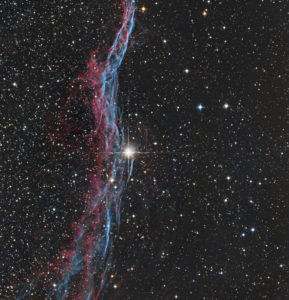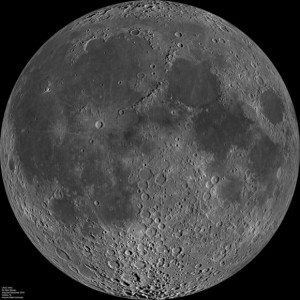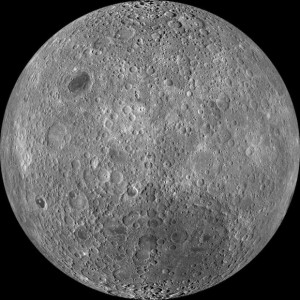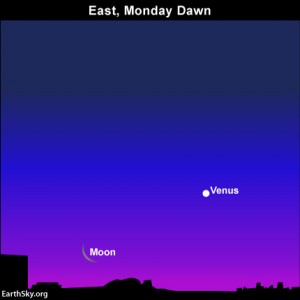One Pier Available For Lease
- July 8, 2017
Great news! We will have a pier available NOW. Pier rental is $575 per month and includes electric and internet. Contact us for more information. Experience Bortle 1 sky.
Great news! We will have a pier available NOW. Pier rental is $575 per month and includes electric and internet. Contact us for more information. Experience Bortle 1 sky.
SkyPi has the distinct honor of hosting a 16″ Dream Telescope a Newtonian Astrograph owned by Insight Observatory. Muir Evenden and Michael Petrasko spent a week on site with John for the installation. They were able to see, first hand, the beautiful and clear sky conditions our remote location has to offer. Thanks so much guys. We are happy you enjoyed your stay! John is a fabulous host! I am sad I was not able to be here as well. Jan
Below is a link to their blog that discusses their visit here at SkyPi.
http://www.insightobservatory.com/2017/05/ateo-feeling-at-home-at-skypi.html
 “Our home observatory in Tucson was dismantled, and the telescope equipment was moved to a very dark sky location in Pie Town, New Mexico. Our friends, John and Janet Evelan, own SkyPi Remote Observatory, and the equipment is set up and operational in one of their pod observatory buildings. I now operate the telescope completely by remote control over the internet from my home in Rhode Island! The technology is amazing, and with the help of John and Jan I can conduct great imaging under extremely clear and dark skies at an elevation of about 7900 feet.
“Our home observatory in Tucson was dismantled, and the telescope equipment was moved to a very dark sky location in Pie Town, New Mexico. Our friends, John and Janet Evelan, own SkyPi Remote Observatory, and the equipment is set up and operational in one of their pod observatory buildings. I now operate the telescope completely by remote control over the internet from my home in Rhode Island! The technology is amazing, and with the help of John and Jan I can conduct great imaging under extremely clear and dark skies at an elevation of about 7900 feet.
Great news! We will have a pier available on August 1st. Pier rental is $650 per month and includes electric and internet. Contact us for more information. Experience Bortle 1 sky.
Maria Mitchell (1818-1889)
Astronomer
Growing up in the whaling town of Nantucket, Massachusetts Mitchell grew up learning about the stars and navigation. She could rate the chronometers for whaling ships and plot the movements of the planets.
In 1847, her discovery of a comet invisible to the naked eye won her international fame and a medal from the king of Denmark. After that, she went to work for the U.S. Nautical Almanac Office to compute ephemeredes of the planet Venus.
When Vassar College was founded in 1865, she joined the faculty as a professor of astronomy and director of the college observatory. She became the first woman elected to the American Academy of Arts and Sciences, and founded the Association for the Advancement of Women in 1873, chairing the Committee on Women’s Work in Science until her death.
When spacecraft first transmitted the images of the moon’s far side to Earth, we saw the lunar farside lacks the large dark areas called maria, or seas. Why?

Composite image of the lunar nearside taken by the Lunar Reconnaissance Orbiter in June 2009. Note the presence of dark areas – called maria by astronomers – on this side of the moon. Image via NASA

Composite image of the lunar farside – the side that always faces away from Earth – taken by the Lunar Reconnaissance Orbiter in June 2009. Note the absence of large dark areas. Image via NASA
The dark maria or seas – large flat areas of basalt on the moon’s near side – are sometimes referred to as the man in the moon. No such features exist on far side of the moon. Why are there dark maria on the moon’s near side, but not far side? Penn State astrophysicists think they have the answer. They believe that the absence of maria, which is due to a difference in crustal thickness between the near side of the moon and the far side, is a consequence of how the moon originally formed. The researchers reported their results in the June 9 Astrophysical Journal Letters.
Jason Wright, assistant professor of astrophysics at Penn State, said:
I remember the first time I saw a globe of the moon as a boy, being struck by how different the farside looks. It was all mountains and craters. Where were the maria? It turns out it’s been a mystery since the 1950s.
This mystery – called the Lunar Farside Highlands Problem by astronomers – dates back to 1959, when the Soviet spacecraft Luna 3 transmitted the first images of the dark side of the moon back to Earth. Researchers immediately noticed that fewer maria on the portion of the moon that always faces away from Earth.
The Penn State astronomers looked back to the formation of the moon for their ideas on why one side of the moon has maria, and the other doesn’t. The general consensus on the moon’s origin is that it probably formed shortly after the Earth and was the result of a Mars-sized object hitting Earth with a glancing, but devastating impact. This Giant Impact Hypothesis suggests that the outer layers of the Earth and the object were flung into space and eventually formed the moon.
Shortly after the giant impact, the Earth and the moon were very hot, said researchers. The Earth and the impact object did not just melt; parts of them vaporized, creating a disk of rock, magma and vapor around the Earth.
The geometry was similar to the rocky exoplanets recently discovered very close to their stars, said Wright. The moon was 10 to 20 times closer to Earth than it is now, and the researchers found that it quickly assumed a tidally locked position with the rotation time of the moon equal to the orbital period of the moon around the Earth. The same real estate on the moon has probably always faced the Earth ever since. Tidal locking is a product of the gravity of both objects.
The moon, being much smaller than Earth cooled more quickly. Because the Earth and the moon were tidally locked from the beginning, the still hot Earth – more than 2500 degrees Celsius – radiated towards the near side of the moon. The far side, away from the boiling Earth, slowly cooled, while the Earth-facing side was kept molten creating a temperature gradient between the two halves.
This gradient was important for crustal formation on the moon. The moon’s crust has high concentrations of aluminum and calcium, elements that are very hard to vaporize.
Aluminum and calcium would have preferentially condensed in the atmosphere of the cold side of the moon because the nearside was still too hot. Thousands to millions of years later, these elements combined with silicates in the moon’s mantle to form plagioclase feldspars, which eventually moved to the surface and formed the moon’s crust. The farside crust had more of these minerals and is thicker.
The moon has now completely cooled and is not molten below the surface. Earlier in its history, large meteoroids struck the nearside of the moon and punched through the crust, releasing the vast lakes of basaltic lava that formed the nearside maria that make up the characteristic man in the moon features.
Meanwhile, when meteoroids struck the farside of the moon, in most cases the crust was too thick and no magmatic basalt welled up, creating the dark side of the moon with valleys, craters and highlands, but almost no maria.

Mercury, the solar system’s innermost planet, orbits the sun inside of Earth’s orbit. Therefore, Mercury always stays close to the sun in Earth’s sky and is often lost in the sun’s glare. But Mercury reaches its greatest elongation – greatest angular distance – east of the sun on May 25, so this world can now be spotted low in the west-northeast as dusk ebbs into darkness. As always, binoculars help out with any Mercury quest.
The planet Jupiter is the first “star” to pop out after sunset. If you’re familiar with the star Regulus, you can draw an imaginary line from Regulus and past Jupiter to locate Mercury near the sunset point on the horizon. (See sky chart below.) Given a clear sky and unobstructed horizon, Mercury could be visible to the unaided eye about 60 to 90 minutes after sunset. If not, try binoculars.
Although Mercury shines more brightly than Regulus does, you might see Regulus first because it’s not as obscured by the glow of evening twilight. What is the ecliptic?

…and don’t forget the morning sky, which features the dazzling planet Venus and a thin waning crescent moon on Monday, May 26.
Setting times of the sun and Mercury in your sky
At an elongation of 23o Mercury lies far enough east of setting sun to stay out until the end of astronomical twilight (at mid-northern latitudes). By definition, astronomical twilight ends in the evening sky when the sun is 18o below the horizon. For reference, the sun’s diameter equals one-half degree, and your fist at an arm length approximates 10o.
Because Mercury is setting a maximum amount of time after sunset right now, this is your chance to catch Mercury low in the west at late dusk or nightfall. But don’t tarry when seeking this elusive yet surprisingly bright world, for Mercury – even now – follows the sun beneath the horizon around nightfall. At mid-northern latitudes, astronomical twilight ends nearly two hours after sunset, at about the same time that Mercury sets beneath the horizon.
End of nautical twilight and Mercury’s setting time in your sky
We should mention that the Northern Hemisphere enjoys the better view of this particular evening apparition of Mercury. That’s because the ecliptic – the pathway of the planets – hits the horizon at a steeper angle as the sun sets in the Northern Hemisphere sky.
Mercury stands higher over the horizon at sunset in Northern Hemisphere than at comparable latitudes in the Southern Hemisphere. For instance, at 40o north latitude – the latitude of Philadelphia, Pennsylvania – Mercury’s altitude at sunset is about 19o. In contrast, at 40o south latitude – the latitude of Wanganui, New Zealand – Mercury’s altitude is less than 11o at sunset.
No wonder Mercury sets more than 100 minutes after sunset at mid-northern latitudes but less than 80 minutes after sunset at mid-southern latitudes. The farther north you live, the later that Mercury sets after sunset; and the farther south you live, the sooner.
Although this evening apparition of Mercury favors the Northern Hemisphere, everyone worldwide has a reasonably good chance of catching Mercury after sunset right now. Look for Mercury above the sunset point on the horizon some 60 to 75 minutes after sunset.
Mercury might be visible to the unaided eye for another week or so, but binoculars always help out with your search for Mercury, the solar system’s innermost planet.
Bruce McClure EarthSky News
A small icy object within the rings of Saturn might be a brand new moon in the process of being born.
NASA’s Cassini spacecraft has documented the formation of a small icy object within the rings of Saturn that may be a new moon, and may also provide clues to the formation of the planet’s known moons.
Images taken with Cassini’s narrow angle camera on April 15, 2013, show disturbances at the very edge of Saturn’s A ring — the outermost of the planet’s large, bright rings. One of these disturbances is an arc about 20 percent brighter than its surroundings, 750 miles (1,200 kilometers) long and 6 miles (10 kilometers) wide. Scientists also found unusual protuberances in the usually smooth profile at the ring’s edge. Scientists believe the arc and protuberances are caused by the gravitational effects of a nearby object. Details of the observations were published online today (April 14, 2014) by the journal Icarus.
The object is not expected to grow any larger, and may even be falling apart. But the process of its formation and outward movement aids in our understanding of how Saturn’s icy moons, including the cloud-wrapped Titan and ocean-holding Enceladus, may have formed in more massive rings long ago. It also provides insight into how Earth and other planets in our solar system may have formed and migrated away from our star, the sun.
“We have not seen anything like this before,” said Carl Murray of Queen Mary University of London, the report’s lead author. “We may be looking at the act of birth, where this object is just leaving the rings and heading off to be a moon in its own right.”
The object, informally named Peggy, is too small to be seen in images so far. Scientists estimate it is probably no more than about a half mile (about a kilometer) in diameter. Saturn’s icy moons range in size depending on their proximity to the planet — the farther from the planet, the larger. And many of Saturn’s moons are composed primarily of ice, as are the particles that form Saturn’s rings. Based on these facts, and other indicators, researchers recently proposed that the icy moons formed from ring particles and then moved outward, away from the planet, merging with other moons on the way.
“Witnessing the possible birth of a tiny moon is an exciting, unexpected event,” said Cassini Project Scientist Linda Spilker, of NASA’s Jet Propulsion Laboratory in Pasadena, Calif. According to Spilker, Cassini’s orbit will move closer to the outer edge of the A ring in late 2016 and provide an opportunity to study Peggy in more detail and perhaps even image it.
It is possible the process of moon formation in Saturn’s rings has ended with Peggy, as Saturn’s rings now are, in all likelihood, too depleted to make more moons. Because they may not observe this process again, Murray and his colleagues are wringing from the observations all they can learn.
“The theory holds that Saturn long ago had a much more massive ring system capable of giving birth to larger moons,” Murray said. “As the moons formed near the edge, they depleted the rings and evolved, so the ones that formed earliest are the largest and the farthest out.”
The Cassini-Huygens mission is a cooperative project of NASA, the European Space Agency and the Italian Space Agency. JPL, a division of the California Institute of Technology, manages the mission for NASA’s Science Mission Directorate in Washington.
Cariklo is the first body after the giant planets found to harbor a ring system
Mar 26, 2014 |By Elizabeth Gibney and Nature magazine
Astronomers have discovered rings around an asteroid-like body whose orbit is between those of Saturn and Uranus. At just 250 kilometers across, Chariklo is the smallest body so far found to have rings. Previously, only the giant planets — Jupiter, Saturn, Uranus and Neptune — have been seen sporting them.
Published online today in Nature, the finding indicates that rings may be a more common feature than previously thought. The discovery was an accident and a surprise, says lead author Felipe Braga-Ribas, an astronomer at the National Observatory in Rio de Janeiro. Rings are interesting celestial features, as they are often a first step in the formation of planets and moons. But matter would typically struggle to stay stable around a body with only a tiny gravitational pull. “We thought that maybe having rings was linked with the mass of the object. So finding them on a small object was very unexpected,” he says.
More… Scientific American – asteroid